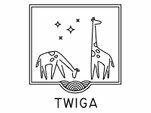The first TWIGA cost-effective GNSS stations were successfully deployed in Uganda in November 2019 by GReD, PoliMi, and TU Delft. Since then, they have collected raw GNSS data to monitor the amount of atmospheric water vapor, for meteorological applications. The stations were deployed nearby Kampala, forming a dense mesh capable of detecting spatial variations of water vapor at high resolution.
This first version of cost-effective stations was capable of tracking GNSS signals on only one frequency (i.e., single-frequency stations). To compute the amount of atmospheric water vapor, the usage of dual-frequency stations surrounding the TWIGA stations is required, to correct the single-frequency measurements for the effects due to the passage of the GNSS signals through the ionosphere.
Dual-frequency stations were already operational in Uganda for geodetic applications (IGS stations, UGRF stations) and to provide corrections to users’ GNSS devices as a commercial service (stations belonging to private companies).
With the objective of generating – for the first time – a complete and continuous water vapor dataset for the whole country of Uganda, it was decided to download raw GNSS data for all stations belonging to one of the private companies, namely Survnet (U) Ltd. (visit).

Daily raw GNSS data from this network can be freely downloaded from the company website, after registration. The dataset included raw GNSS dual-frequency data coming from 16 stations, over a period of 19 months starting from 1 November 2019 and ending on 31 May 2021, matching the period in which also the six TWIGA low-cost stations have been operated.

The distances between pairs of Survnet (U) Ltd. stations vary from about 50 km near Kampala to about 150 km in the northern part of the country. While this spatial distribution is sufficient for most precise positioning applications, monitoring the atmospheric water vapor effectively requires a higher resolution spatial sampling. This is needed in order to capture the smaller water vapor patterns, as for example those associated with the generation of convective rainstorms. For this reason, the six TWIGA low-cost single-frequency stations were deployed in the area surrounding Kampala, densifying the pre-existing network there to obtain distances ranging from about 3 km to about 60 km.

RELATED TWIGA SERVICE: YOUR LOCAL & TIMELY WEATHER SERVICE
Written by: Eugenio Realini (GReD)

